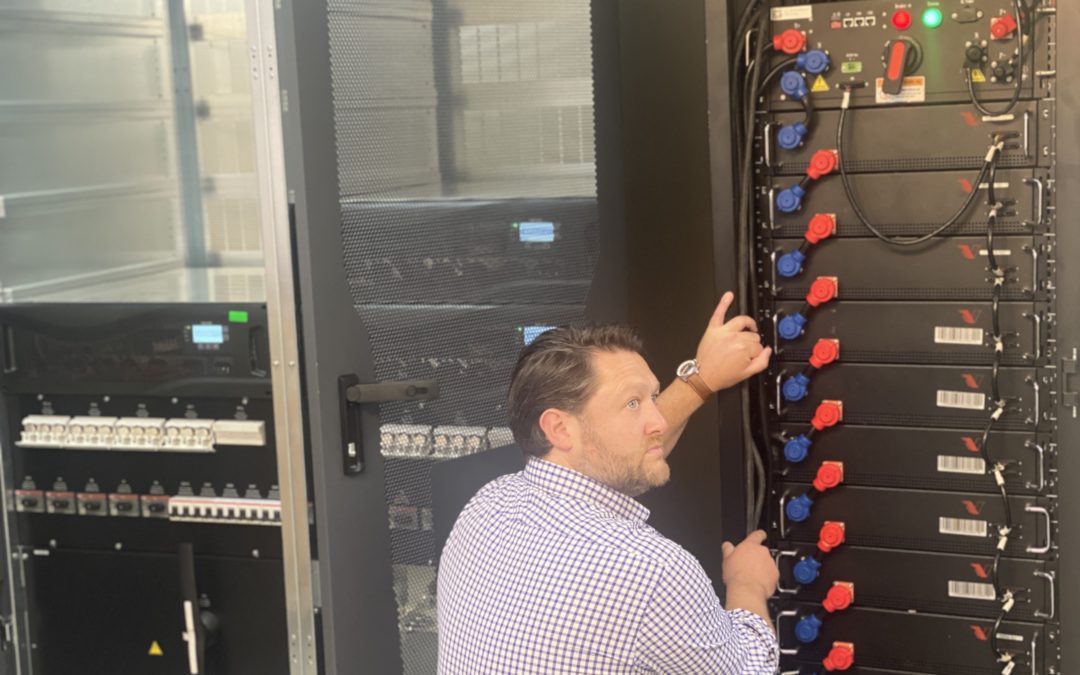Louis McGarry, Sales & Marketing Director, looks at why less information can lead to more interpretation when it comes to uninterruptible power supply (UPS) technology.
There are a variety of terminologies to describe UPS architecture. The most well-known include: standalone, modular, true modular, decentralised, distributed. The challenge comes with the interpretation of these descriptions, as they usually mean different things to different people. Purchasers have to work harder than ever to understand what they are buying, digging further beneath the surface to find out precisely what performance features and benefits really exist to ensure they meet their requirements. If information is difficult to obtain, then beware of creative sales and marketing techniques as this may lead to making a wrong and costly decision!
TAKE THE TIME
Moving to a more sophisticated technology such as modular is a step up from a standalone (monolithic) UPS architecture in relation to adding resilience and availability. However, if purchasers are not careful to take the time to understand how the technology has been designed, they may end up taking a step backwards. This is because when manufacturers use the term ‘modular’ it can have a different connotation and functionality may come up short.
Understanding UPS architecture is key to helping you to make the right choice. I will outline my interpretation, of course, it is only my view, but the information will enable buyers to ask the correct questions to help ensure they get the most appropriate system to protect their critical power.
STANDALONE ARCHITECTURE
The standalone transformerless UPS architecture includes all the standard building blocks found in a UPS including inverter, rectifier, control logic and internal static bypass. Every component in the system is a potential single point of failure which poses a risk to the system: if one component fails the entire system could shut down and the load could be lost.
The most common way to improve the availability of a UPS system is to introduce redundancy. A single standalone UPS has no redundancy, so to create a redundant system, a standalone UPS must be replicated with a second unit. Although inexpensive to purchase one standalone UPS, adding a second can be expensive as effectively you are doubling the price of the system.
Standalone UPS technology has come a long way since the implementation of Insulated-gate Bipolar Transistor’s (IGBT). One of the disadvantages associated with standalone systems has been the difficulty in maintaining them. However, some of the latest units which we might call Standalone do have a ‘modular influence’, where the technology has been developed to include some of the benefits of modular systems. This means that ease of maintenance has been the main focus with the addition of hot swappable components or sub-assemblies which are completely front accessible. This architecture, if configured correctly can introduce a level of redundancy into the power parts of the UPS which is beneficial to improve availability.
These new standalone systems won’t provide as many benefits as a modular UPS but if you have a limited space and budget, they can be an efficient and maintainable solution. However, this doesn’t apply to all standalone systems, so do your homework!
Often standalone UPS fall into the ‘me too’ range of options, but they are now much more than that. With some standalone systems being scaled into the Mega Watt’s, they are pushing a lot of power through and are a serious investment.
MODULAR ARCHITECTURE
There are all sorts of UPS products out there labelled as ‘modular’ but what does that really mean? There are three main architectures to be aware of: Centralised, De-centralised and Distributed.
Centralised Architecture
A centralised architecture can introduce redundancy through the use of modules. In reality, this simply means it’s possible to swap certain elements out of a system, which can increase availability. However, the elements of commonality in a centralised solution, leading to single points of failure, are open to huge variations between manufacturers. Single points of failure might include: a CPU, inverter or static switch. Regardless of redundancy, a centralised control logic making decisions for the whole system, one centralised bypass and one communication channel means if any of these components fail, the load could be lost.
Decentralised Architecture
Here’s where each module contains all the elements of a UPS including rectifier, inverter, static bypass, and control logic improving availability further. Because of the elimination of any single point of failure, this architecture makes a step forward in terms of level of Power Availability. A decentralised system results in up to six-nines availability equivalent to 31.5 seconds downtime per year.
Modules can be hot swapped but there is still a master module making decisions for the whole system through its control logic. It is important to note that other critical components may not have built in redundancy, including the communication bus between modules and frames.
Crucially, there is also no provision for potential human error when swapping modules. This means that when an engineer is working under pressure responding to a fault, they do not have the functionality to isolate and test modules being added to a live system.
Distributed Architecture
Distributed architecture adds more layers of resilience. It offers the highest level of availability on the market because it replicates all of the components across the multiple modules and resilience is added into the components themselves too.
The architecture is completely distributed, each UPS module includes rectifier, inverter, static bypass, and control logic. No single module makes decisions for the whole system, instead, a distributed decision making takes places to eliminate the logic’s single point of failure.
Because the static bypass is distributed and redundant, if any component within a single module becomes unavailable it is automatically isolated within the system and the remaining modules ensure that the load remains protected. The components themselves also contain redundancy. For example, the communication buses between modules and frames have inbuilt redundancy so if one fails communication is not interrupted.
SAFETY FIRST
For the first time, we see human error mitigation through safe-hot-swap capability. In other words, distributed architecture removes the chance of any risk being added to the system through the introduction of a module with an inherent fault. This means an engineer needing to replace a module can safely isolate any individual module from the output load bus. The rest of the modules will seamlessly supply the load on inverter while the engineer tests the module safely before connecting it back to the load. Even firmware upgrades do not require switching to manual bypass. With only hot swap functionality, this is not possible and a fault in a new module or human error could cause the load to be lost. As a result, this means the distributed modular UPS architecture provides the highest level of availability possible achieving downtimes per year as low as 0.0315 seconds.
We call this distributed architecture ‘true modular’ which means there are no single points of failure, there is redundancy on every component.
KEEP IT CLEAN
The purpose of the UPS is to provide clean, continuous power, that is available at all times. There are many options and configurations available to suit different scenarios and projects. However, buyers need to aware of the different ‘interpretations’ and be able to compare the technical information provided by the manufacturer to enable them to ask the right questions. Understanding whether they are buying a UPS with centralised, decentralised or distributed architecture will have a direct influence on they system’s availability and whether it will perform as expected if the power is interrupted.
Originally featured in Inside Networks Magazine November 2021

